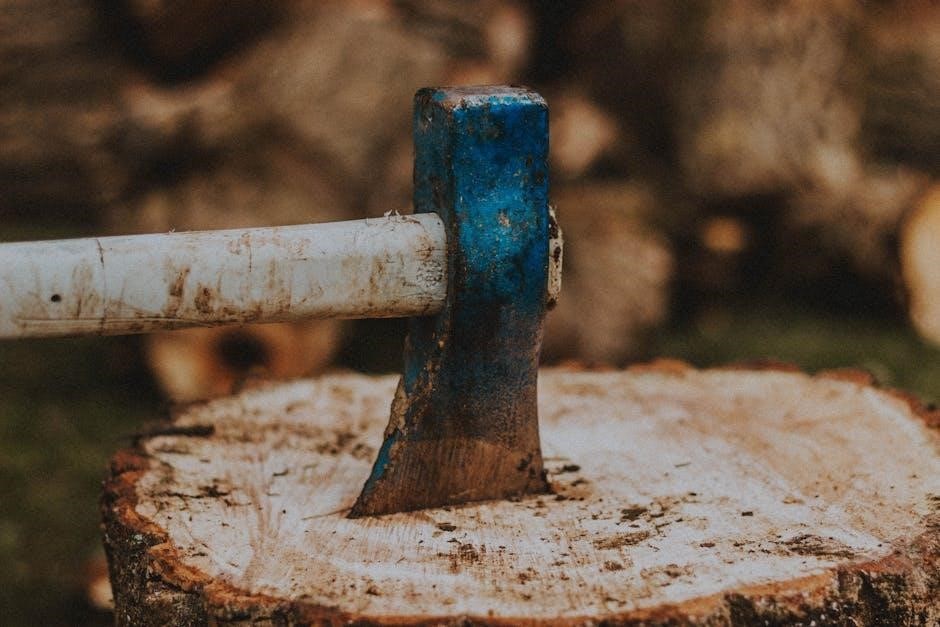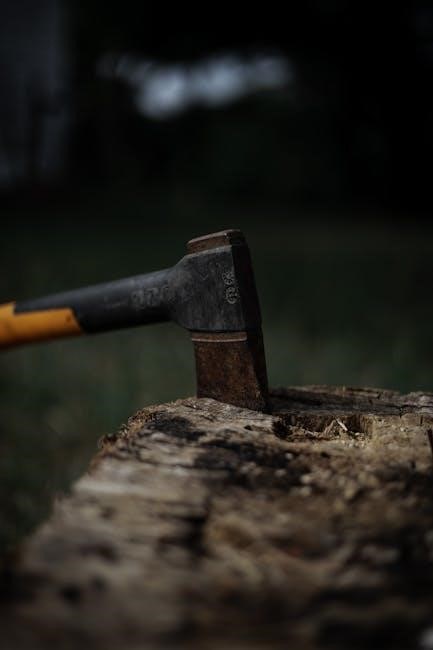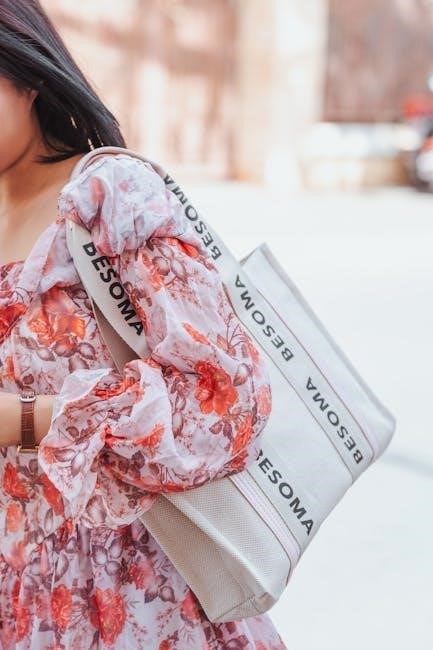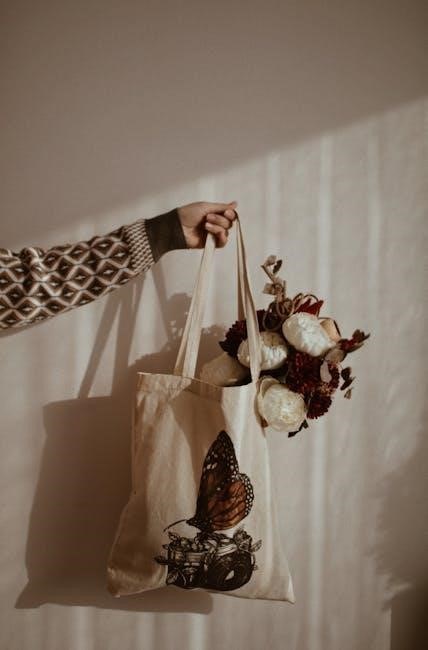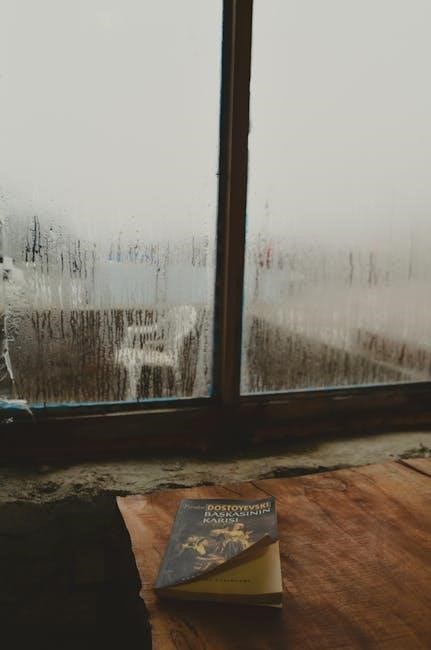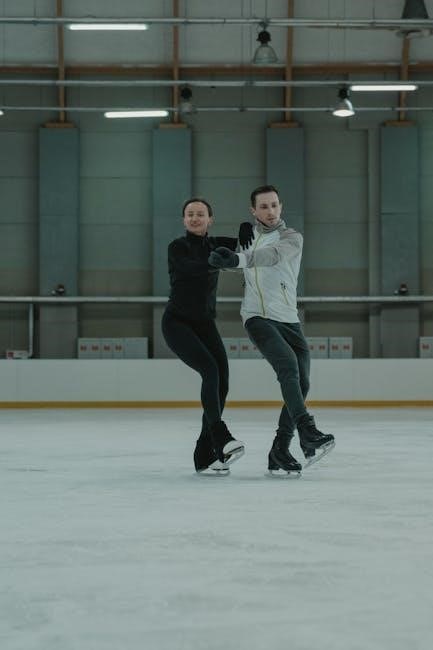Irregular verbs are a fundamental part of the English language, often requiring memorization due to their unpredictable forms․ Mastering them is essential for fluency, with resources like PDF guides and apps aiding learners․
What Are Irregular Verbs?
Irregular verbs are verbs that do not follow the standard rule of adding “-ed” to form their past tense and past participle․ Instead, their forms are unique and must be memorized․ For example, the verb “go” becomes “went” in the past tense, while “sing” becomes “sang․” These verbs often have unpredictable endings and may involve changes in vowels or consonants․ Unlike regular verbs, irregular verbs do not conform to a specific pattern, making them challenging to learn․ They are, however, among the most commonly used verbs in English, making their mastery essential for effective communication․ Resources like PDF guides and apps are widely available to help learners memorize these verbs․ Understanding irregular verbs is a key step in achieving fluency in English, as they appear frequently in both spoken and written contexts․ Their unique forms require dedicated practice and repetition to commit them to long-term memory․

Importance of Mastering Irregular Verbs in English
Mastering irregular verbs is crucial for achieving fluency and accuracy in English․ These verbs are among the most frequently used in everyday communication, making their correct usage essential for clear and effective expression․ Irregular verbs often carry nuanced meanings, and their proper conjugation enhances both spoken and written communication․ For instance, understanding the difference between “go-went-gone” and “sing-sang-sung” is vital for conveying the correct tense and context․ Additionally, irregular verbs are a cornerstone of English grammar, and their mastery is often a key indicator of language proficiency․ By learning these verbs, learners can access a wide range of resources, such as PDF guides and language apps, designed to simplify the learning process․ Ultimately, irregular verbs are not just a grammatical challenge but a gateway to more confident and precise communication in English․
Classification of Irregular Verbs
Irregular verbs are categorized based on their unique past tense and past participle forms, which often involve vowel changes or additional letters․ Examples include “sing-sang-sung” and “go-went-gone,” highlighting their diverse patterns․
Common Irregular Verbs
Common irregular verbs are frequently used in everyday English, making them a priority for learners; Verbs like “go-went-gone,” “sing-sang-sung,” and “drink-drank-drunk” are essential for basic communication․ These verbs often involve vowel changes or unique endings․ For example, “begin-began-begun” and “write-wrote-written” showcase typical irregular patterns․ Many resources, such as PDF guides, list these verbs for easy memorization․ They are grouped by similarity, helping learners identify patterns․ For instance, “choose-chosen” and “lose-lost” share similar vowel shifts․ Regular practice with exercises and quizzes can reinforce retention․ Additionally, apps and online tools offer interactive ways to master these verbs․ Understanding and using common irregular verbs correctly enhances fluency and accuracy in English․ They are a cornerstone of language proficiency, making them indispensable for learners at all levels․
Less Common Irregular Verbs
Less common irregular verbs are those that are not used as frequently in everyday conversation but still appear in specific contexts․ Examples include “arise-rose-arisen,” “bake-baked-baked,” and “bet-bet-bet․” These verbs often have unique patterns that do not follow predictable rules․ For instance, “catch-caught-caught” and “teach-taught-taught” involve vowel shifts and consonant changes․ While they may not be as high-priority as common irregular verbs, mastering them can enhance language precision․ Resources like comprehensive PDF guides and verb lists often include these less common verbs, providing learners with a broader understanding․ Apps and online tools also offer exercises to practice these verbs․ Although they are less frequently encountered, they are still important for advanced learners aiming for fluency and accuracy in English․ Regular review and practice can help solidify these verbs in long-term memory, ensuring they are available for use when needed․
Challenges in Learning Irregular Verbs

Irregular verbs lack predictable patterns, making memorization difficult․ Their unique forms, such as “arise-rose-arisen” or “bet-bet-bet,” require consistent practice․ Even common verbs often have irregular past forms, adding complexity for learners․
Memory Aids and Mnemonics
Memory aids and mnemonics are invaluable for mastering irregular verbs․ Techniques like creating mnemonics, such as associating verb forms with memorable sentences or images, can enhance retention․ For example, “sing-sang-sung” can be linked to a singing duck․ Apps like Verbes Irréguliers Anglais 2 Premium offer interactive exercises to make learning engaging․ PDF guides provide structured lists, allowing learners to track progress visually․ Mnemonics can also involve grouping verbs by similar patterns, such as “drink-drank-drunk” and “sink-sank-sunk․” Additionally, using flashcards with vivid imagery or rhymes can make irregular forms stick․ Online platforms like MyVerbs offer pronunciation aids, reinforcing memory through audio-visual association․ Consistent practice with these tools ensures that irregular verbs become second nature, reducing reliance on rote memorization and fostering long-term retention․
Common Mistakes to Avoid

When learning irregular verbs, common mistakes often stem from overgeneralization or incorrect assumptions․ Many learners mistakenly apply regular verb endings to irregular ones, such as saying “goed” instead of “went․” Overreliance on spelling rather than pronunciation can also lead to errors, as irregular verbs frequently defy phonetic rules․ Another pitfall is mixing up similar-sounding verbs, like “knew” and “new,” which share sounds but have different past forms․ Additionally, learners may confuse the past simple and past participle forms, such as using “ate” instead of “eaten” in perfect tenses․ To avoid these mistakes, consistent practice with exercises from PDF guides and apps like Verbes Irréguliers Anglais 2 Premium is crucial․ Regular review and focusing on high-frequency verbs can help solidify correct forms and reduce errors over time․

Study Methods for Irregular Verbs
Traditional methods like flashcards and lists remain effective, while modern tools such as apps and online platforms offer interactive ways to memorize and practice irregular verbs efficiently․
Traditional Methods: Flashcards and Lists
Traditional methods like flashcards and lists are timeless tools for learning irregular verbs․ Flashcards allow learners to memorize verb forms visually, with the base form on one side and the past tense and past participle on the other․ Lists, often available in PDF formats, organize verbs systematically, making them easy to review and practice․ Many learners find writing down verbs in lists repetitive but effective for long-term retention․ Additionally, physical flashcards can be carried anywhere, enabling on-the-go study․ For example, a flashcard for “sing” would show “sang” and “sung” on the back․ These methods are simple yet powerful, especially when combined with regular review and self-testing․ They remain popular due to their accessibility and proven results in helping learners master irregular verbs effectively․

Modern Methods: Apps and Online Tools

Modern technology has revolutionized the way we learn irregular verbs, with apps and online tools offering interactive and engaging methods․ Apps like “Verbes Irréguliers Anglais 2 Premium” provide comprehensive lists of verbs, quizzes, and exercises tailored to different learning styles․ These tools often include features like flashcard modes, pronunciation guides, and progress tracking․ Websites such as MyVerbs offer similar functionalities, allowing users to practice verb conjugations in a structured manner․ Many platforms incorporate gamification, making the learning process fun and competitive․ Additionally, apps often include audio clips to improve pronunciation and interactive exercises to test knowledge․ These modern methods are particularly effective for learners who prefer dynamic and flexible study options․ They complement traditional methods by offering instant feedback and personalized learning experiences, making them a popular choice for mastering irregular verbs efficiently․

Resources for Learning Irregular Verbs
Discover essential resources for mastering irregular verbs, including downloadable PDF guides, comprehensive worksheets, and interactive apps designed to simplify learning․ These tools provide structured approaches to understanding and memorizing verb conjugations․
PDF Guides and Worksheets
PDF guides and worksheets are excellent resources for learning irregular English verbs․ They provide comprehensive lists of verbs, their past forms, and past participles, making them ideal for structured study․ Many guides are downloadable, offering convenience for learners to practice anytime․ Worksheets often include exercises like fill-in-the-blank and conjugation drills, reinforcing retention․ Some PDFs focus on the most common irregular verbs, while others cover a wide range of 200 or more verbs․ Additionally, resources like “Verbes Irréguliers Anglais 2 Premium” offer interactive learning through apps, combining traditional PDF content with modern features․ These tools cater to different learning styles, ensuring that learners can master irregular verbs effectively․ Whether you prefer printed worksheets or digital guides, these resources are indispensable for building a strong foundation in English verb conjugation․
Recommended Books and eBooks
Recommended books and eBooks on irregular English verbs are invaluable for learners seeking a structured approach․ These resources often include comprehensive lists of verbs, clear explanations, and practice exercises․ Many popular books focus on the most commonly used irregular verbs, providing context and usage examples․ eBooks offer the added convenience of digital access, with features like search functions and interactive quizzes․ Some notable publications include verb conjugation charts and memory aids to enhance retention․ Additionally, eBooks like “Verbes Irréguliers Anglais 2 Premium” combine traditional learning methods with modern technology, offering a blend of PDF guides and interactive tools․ Whether you prefer physical books or digital formats, these resources provide a thorough understanding of irregular verbs, making them essential for learners at all levels․ They are particularly useful for those who prefer a self-paced, organized study routine․

Practice and Application
Practicing irregular verbs is crucial for mastery․ Utilize exercises, quizzes, and real-life contexts to reinforce learning․ PDF guides and apps provide interactive tools for effective practice and application of irregular verbs daily․
Exercises and Quizzes
Engaging in regular exercises and quizzes is vital for mastering irregular English verbs․ PDF guides often include interactive exercises, such as fill-in-the-blank activities and verb conjugation drills, to test understanding․ Apps like Verbes Irréguliers Anglais 2 Premium offer quizzes with varying difficulty levels, making practice enjoyable and effective․ Websites like MyVerbs provide multiple-choice questions and flashcard-style tests, catering to different learning preferences․ These tools allow learners to track progress and identify areas needing improvement․ Real-life sentence completion exercises help contextualize verb usage, enhancing retention․ Consistent practice through these methods ensures irregular verbs become second nature, improving overall language proficiency․ By incorporating exercises and quizzes into daily study routines, learners can build confidence and accuracy in using irregular verbs correctly․
Real-Life Usage and Context
Understanding irregular verbs in real-life contexts is crucial for effective communication․ PDF guides and online resources often provide sentences demonstrating verb usage in everyday situations, helping learners grasp practical applications․ For example, verbs like go/went/gone or eat/ate/eaten are frequently used in conversations, making their mastery essential․ Apps like Verbes Irréguliers Anglais 2 Premium offer interactive exercises where users can practice verbs in contextual scenarios, enhancing retention․ Websites such as MyVerbs include audio clips to improve pronunciation and comprehension․ Real-life usage also involves understanding nuances, like the difference between swim/swam/swum in various tenses․ By applying irregular verbs in meaningful contexts, learners can develop a more natural and fluent command of English․ This approach ensures that memorization is reinforced through practical, relatable examples, making language learning more engaging and effective․

Technology and Learning Tools
Apps like Verbes Irréguliers Anglais 2 Premium and websites such as MyVerbs offer interactive exercises, quizzes, and PDF guides to aid in mastering irregular verbs through engaging and accessible methods․
Language Learning Apps
Language learning apps like Verbes Irréguliers Anglais 2 Premium and MyVerbs provide interactive tools to master irregular verbs․ These apps offer conjugation charts, quizzes, and pronunciation guides, making learning engaging and effective․ Many apps allow users to download PDF lists of verbs for offline study, ensuring accessibility anywhere․ Features such as progress tracking, spaced repetition, and gamification help learners stay motivated․ MyVerbs, for instance, offers multiple revision modes, including pronunciation practice and interactive exercises․ These apps cater to all skill levels, from beginners to advanced learners, and are particularly useful for students needing to memorize verbs for exams or language proficiency tests․ By combining technology with traditional methods, these tools make learning irregular verbs more efficient and enjoyable, ensuring long-term retention and practical application in real-life conversations․ They are indispensable resources for anyone aiming to improve their English language skills․
Online Platforms and Websites
Online platforms and websites are invaluable resources for learning irregular English verbs․ Websites like MyVerbs offer comprehensive tools, including interactive exercises, quizzes, and pronunciation guides․ These platforms provide users with the ability to practice irregular verbs in various contexts, enhancing retention and practical application․ Many sites allow users to download PDF lists of verbs for offline study, combining digital convenience with traditional learning methods․ Features such as progress tracking, spaced repetition, and gamification make learning engaging and effective․ Additionally, platforms often cater to different learning styles, offering visual, auditory, and kinesthetic approaches․ For example, MyVerbs includes multiple revision modes, such as pronunciation practice and interactive exercises, to suit individual preferences․ These online tools are particularly beneficial for self-paced learning, enabling users to master irregular verbs at their own convenience․ They are essential for anyone seeking to improve their English language proficiency through structured and accessible resources․
Mastering irregular English verbs requires consistent practice․ Utilize PDF guides, apps, and online tools to enhance learning․ Regular practice ensures fluency and confidence in using these essential verbs effectively every day․
Final Tips for Success
Consistency is key when mastering irregular English verbs․ Set aside time daily to review and practice, even if briefly․ Use flashcards, apps, or PDF guides to organize your study sessions effectively․ Focus on understanding verb patterns and common exceptions, as this can help reduce confusion․ Practice verbs in context through sentences or conversations to improve retention․ Regularly test yourself with quizzes or exercises to identify and address weaknesses․ Leveraging technology, such as language learning apps, can make practice more engaging and accessible․ Lastly, immerse yourself in the language by reading, watching movies, or speaking with native speakers, as real-life usage reinforces learning․ Stay motivated, and celebrate small progress to maintain momentum in your journey to mastering irregular verbs․
Encouragement and Motivation
Mastering irregular English verbs is a challenging but rewarding journey․ Remember, every small step forward is progress, and consistent effort will lead to fluency․ Don’t be discouraged by setbacks—learning a language takes time and patience․ Celebrate each milestone, whether it’s memorizing a new verb or using it correctly in a sentence․ Surround yourself with resources like PDF guides, apps, and online tools to make learning easier and more enjoyable․ Stay positive and remind yourself why you’re learning English in the first place․ The ability to communicate confidently is a valuable skill that will open doors to new opportunities․ Keep practicing, and soon irregular verbs will become second nature․ Believe in yourself and stay motivated—you’ve got this!
Additional Resources
Explore additional resources like PDF guides, apps, and websites for mastering irregular English verbs․ These tools offer comprehensive lists, interactive exercises, and practical tips to enhance your learning journey effectively․
Recommended Websites
Several websites offer valuable resources for learning irregular English verbs․ MyVerbs provides interactive exercises and pronunciation guides, while Verbes Irréguliers Anglais 2 Premium offers a user-friendly app for memorization․ Additionally, sites like EnglishPage and PerfectEnglish feature comprehensive lists and quizzes․ These platforms cater to all skill levels, ensuring learners can practice effectively․ Many websites also include downloadable PDFs, such as the “Top 100 Irregular Verbs” guide, which simplifies revision․ Utilizing these resources can significantly enhance your understanding and retention of irregular verbs․ Explore these tools to find the ones that best suit your learning style and goals․
Further Reading and References
For in-depth study, numerous resources are available online․ Websites like Scribd and Google Drive offer downloadable PDF guides, such as the “Top 100 Irregular Verbs” list, which simplifies learning․ Additionally, apps like Verbes Irréguliers Anglais 2 Premium provide interactive tools for practice․ Many educational platforms, including EnglishPage and PerfectEnglish, feature detailed verb conjugations and exercises․ These resources cater to various learning styles, ensuring comprehensive understanding․ For visual learners, infographics and charts are widely available, while auditory learners can benefit from pronunciation guides․ These materials are designed to complement traditional study methods, offering a well-rounded approach to mastering irregular verbs․ Explore these references to enhance your learning journey and achieve proficiency in English verb conjugation․





